A low-code or no-code platform is a development tool allowing users with minimal to no coding knowledge to produce applications for themselves. These systems help companies scale and innovate faster by accelerating application development, cost reduction, and workflow simplification.
The global low-code platform industry is estimated to reach $45.5 billion by 2025 due to increased demand (Global Forecast Low-Code Platform Industry Report). This article will discuss about top platforms and key evaluation criteria to assist you to decide for your project with knowledge.
>> Read more:
- 12+ No-code App Builders for Businesses
- No-Code And Low-Code Solutions In Logistics And Supply Chain
- How Does No-Code AI Assist In App Development?
Below is a comparative table of the top low-code & no-code platforms based on their types, key features, costs, and key use cases:
Platforms | Key Features | Cost | Ideal for |
Mendix | Multi-cloud API Integrations AI-driven Automation | $1,250/month (cloud) $1,675/month (on-premises) | Enterprise-grade applications |
OutSystems | OutSystems Forge Native App Development | $4,000/month (Enterprise plan) | Large enterprises with complex needs |
Microsoft Power Apps | Microsoft 365 & Azure Integration Dataverse | $40/user/month (Premium plan) | Businesses in the Microsoft ecosystem |
Zoho Creator | Zoho Suite Integration Deluge Scripting Offline Access | $8-$25/month | SMEs looking for simplicity |
Pega | AI-driven Decisions RPA Next-best-action Advanced BPM | Custom pricing | Financial services and large enterprises |
Salesforce Lightning | AppExchange Marketplace Omni-Channel Routing Salesforce Shield | $25-$100/user/month | Organizations focused on CRM and sales |
ServiceNow App Engine | ITSM Integration Predictive Intelligence Virtual Agent | Custom pricing | IT operations, HR, and customer service |
WaveMaker | Open-source Two-Way API Generation Microservices Architecture DevOps Capabilities | $500/month | Enterprises needing customization |
Airtable | Spreadsheet-like UI Multiple Views Real-time Collaboration | $20-$45/user/month (Pro plan) | Teams needing project management tools |
Mendix
Mendix is a low-code platform that helps businesses build custom apps quickly with very little coding. It’s designed for large companies that need flexible and scalable solutions. One of its strengths is that it works well with cloud systems and supports both DevOps and agile development, making it a complete tool for development. While Mendix reduces the need to write a lot of code, you may still need some coding for complex features or custom logic.
Unique Features:
- Visual Development: Lets you build apps faster using a drag-and-drop interface. Both developers and non-technical team members can contribute to the project.
- AI-assisted Development: Uses artificial intelligence (AI) to assist developers in building apps faster by providing recommendations for logic, actions, and more.
- API Integrations: Simplifies connections with enterprise systems, enabling complex, integrated solutions.
- Multi-cloud Deployment: Allows apps to be deployed across private, public, or on-premise clouds.
Personal Review: I found Mendix to be highly flexible, especially with its multi-cloud deployment, offering seamless integration across AWS, Azure, and on-premises environments. The learning curve can be a bit steep at first, especially for complex workflows, but once you get the hang of it, it really speeds up the development process.
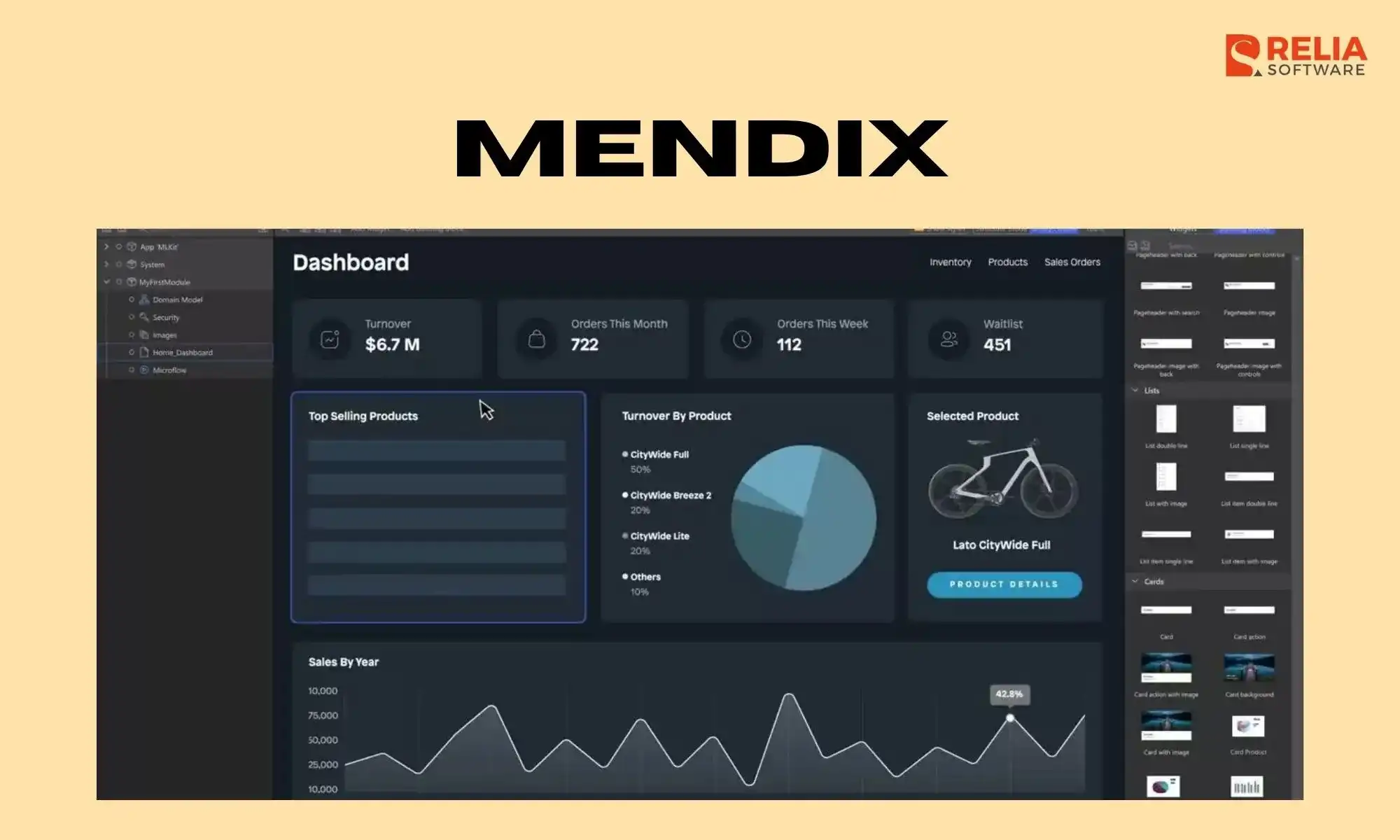
OutSystems
OutSystems is a strong low-code platform built for speed and flexibility. It’s great for creating large-scale apps that work smoothly on both web and mobile. One of its key strengths is the support for custom code when needed, giving developers more control. With built-in AI tools, it can speed up development and make it easier to build high-performance apps.
Unique Features:
- Full-stack Development: Developers can build both the front-end and back-end in one place, making it easier to create complex apps from start to finish.
- End-to-end Lifecycle Management: OutSystems covers the entire app process—building, deploying, monitoring, and updating—all in one platform.
- Built-in Security Features: It includes features like role-based access, data protection, and compliance with standards like ISO and GDPR, which is great for businesses that pay attention to security.
- OutSystems Forge: A library where developers can find and use pre-built components, tools, and solutions shared by the community and OutSystems partners.
- Native App Development: This lets you build full-featured native mobile apps with things like offline support, device access, and cross-platform deployment.
Personal Review: OutSystems impressed me with its real-time monitoring tools. They were a big help in improving app performance as our client’s user base expanded. The interface can be a bit overwhelming at first, especially when working with custom code, but overall, it’s a powerful platform that delivers speed and flexibility for large-scale projects.

Microsoft Power Apps
Microsoft Power Apps is a low-code/no-code platform that works perfectly with other Microsoft tools like Microsoft 365, Azure, and Dynamics 365. It lets you build and launch apps quickly without needing extra third-party integrations. This makes it a great choice for organizations already using Microsoft’s ecosystem, offering a smooth and efficient way to develop custom solutions.
Unique Features:
- AI Builder: Lets you add features like form scanning and sentiment analysis without needing to understand AI deeply, just drag and drop.
- Pre-built Templates: Helps you get started faster with ready-made, customizable templates for common business needs.
- Cross-platform Compatibility: Build your app once and run it smoothly on both web and mobile devices.
- Common Data Service (Dataverse): Stores and manages your data in one central place, making it easy to share across Microsoft services while keeping it secure and scalable.
- Robust automation with Power Automate: Easily connect with Power Automate to create smart workflows and automate tasks between different systems.
Personal Review: I used Power Apps to build internal tools that needed to connect with Azure and Dynamics 365, and the integration was smooth—it really saved a lot of time. That said, the drag-and-drop builder is great for basic apps, but it can feel a bit limiting when you need to create more complex solutions with lots of custom features.

Zoho Creator
Zoho Creator is a budget-friendly no-code platform, ideal for small businesses and individuals looking for quick workflow automation without high costs or complex learning curves. It’s well-suited for those needing simple applications without the advanced features or scalability of platforms like Mendix or OutSystems.
Unique Features:
- Deluge Script: Provides flexibility in building custom logic and workflows beyond simple drag-and-drop options.
- Zoho Ecosystem Integration: Easily connects with other Zoho products like Zoho CRM, Books, and Inventory.
- Multi-Language Support: Allows users to build apps in several languages, ideal for global enterprises aiming to localize their apps easily.
- Offline Access: Enables users to continue working without internet access, with changes syncing once reconnected.
- Native Mobile Capabilities: Optimizes user interfaces and interactions specifically for mobile devices without needing extensive customization.
- Customizable Multi-Step Approval Workflows: Facilitates complex approval processes, making it suitable for businesses with multi-layered decision-making or compliance requirements.
Personal Review: Zoho Creator is excellent for building simple applications quickly. However, as project complexity grows, I found that Zoho Creator's limited scalability and feature set could be restrictive. For smaller businesses or simple automation, it’s a great choice, but larger enterprises may find it lacking for advanced needs.
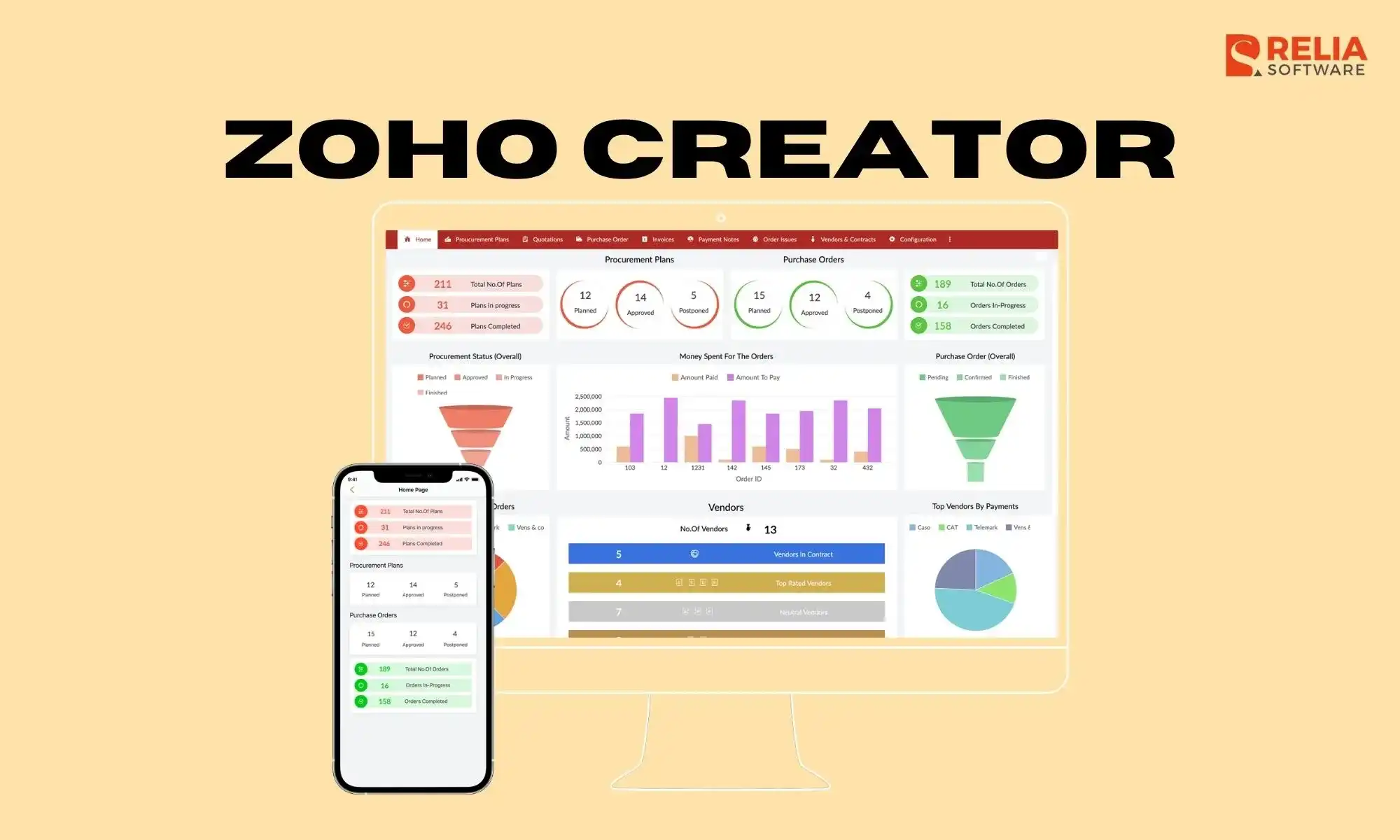
Pega
Pega is a low-code platform that helps businesses automate their work processes, especially in areas like finance and healthcare, where tasks can be complex and heavily regulated. It is known for combining workflow automation with AI to support smart decision-making. What makes Pega stand out is its ability to handle complicated tasks across big organizations, making operations faster and more efficient.
Unique Features:
- Smart AI Decisions: Pega uses real-time data and AI to help businesses make fast, smart decisions during customer interactions.
- Strong Workflow Tools: It lets you design and automate complex business processes, so everything runs smoother and more efficiently.
- Pega Infinity: This all-in-one platform supports automation, case handling, customer support, and process improvement—great for digital transformation.
- RPA Integration: Pega works with robotic process automation to handle repetitive tasks across old systems without needing big changes, helping save time and effort.
- Easy Data Access: It can pull data directly from other systems without having to store it in Pega, keeping everything consistent and up to date.
- Best Next Step Suggestions: Pega gives smart suggestions during customer interactions, helping teams take the best action at the right time.
Personal Review: Pega shines in environments that require complex process automation. However, the platform comes with a steep learning curve, especially for developers new to BPM. Pega may not be the best choice for simpler app development but is unparalleled for enterprises needing highly regulated, intricate workflows.
>> Read more: Key Benefits of Healthcare Automation Systems
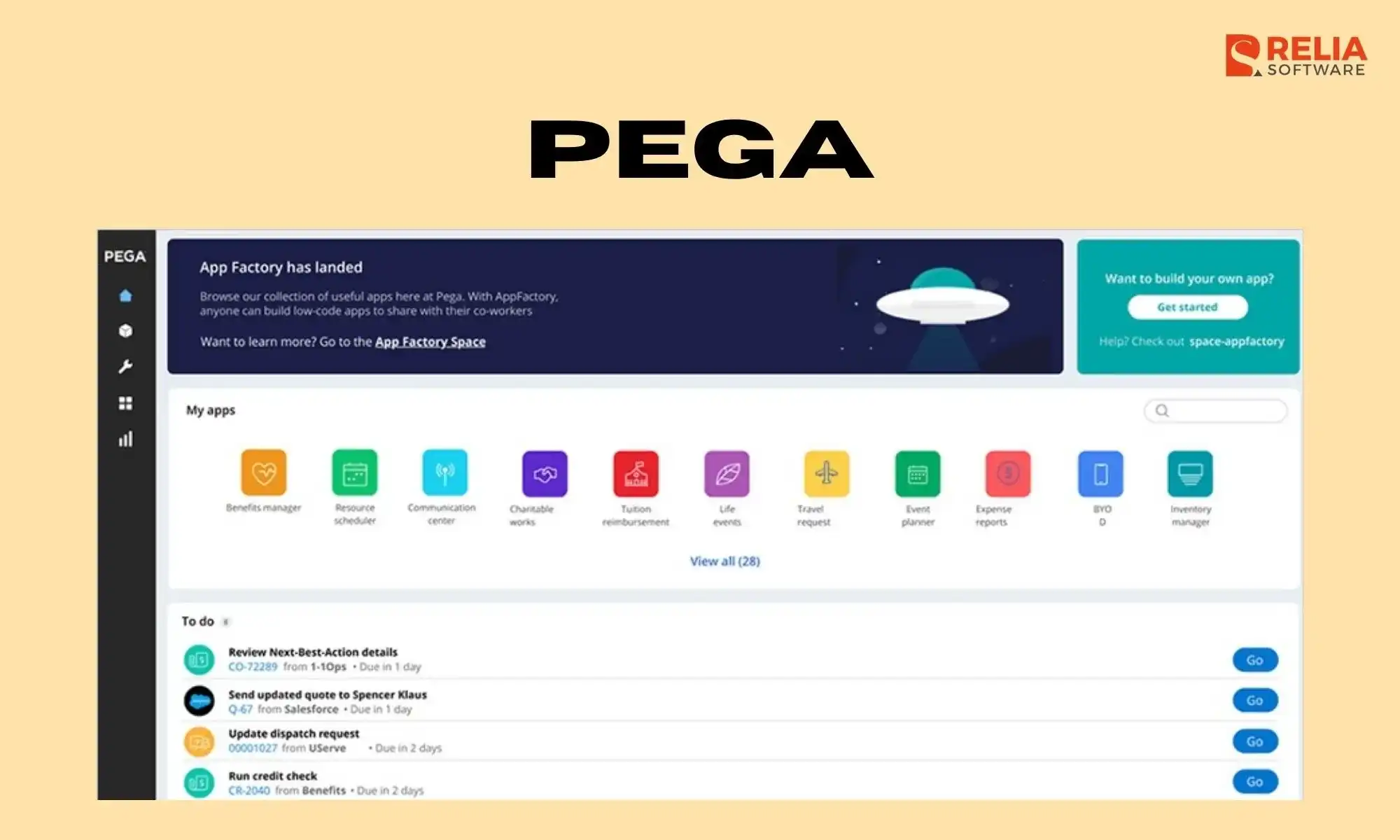
Salesforce Lightning
Salesforce Lightning is a low-code platform within the Salesforce ecosystem, designed for building custom CRM applications and automating workflows. It provides rapid app development for Salesforce-reliant businesses, integrating seamlessly with Salesforce’s CRM environment, making it a top solution for CRM-focused applications.
Unique Features:
- AppExchange Marketplace: Offers over 5,000 ready-to-use apps and tools that help users quickly add features or connect with other systems—no heavy coding needed.
- Trailhead Learning Platform: A free, easy-to-follow learning site by Salesforce that helps users understand everything from basic CRM tasks to building custom apps.
- Omni-Channel Routing: Smartly sends customer requests to the best-suited agent based on their skills, workload, and availability, making service faster and more efficient.
- Multi-Tenant Architecture: Let's all users get updates and scale their apps in real time, without downtime or disruptions.
- Salesforce Shield: Adds extra layers of security and compliance, making Salesforce a strong choice for industries with strict data protection rules.
Personal Review: In my experience, Salesforce makes CRM app development fast thanks to its built-in tools and smooth integration. It's not as flexible for non-CRM apps, but for anything customer-related, Salesforce Lightning is a top pick.
>> Read more: 10 Popular CRM Software Development Companies in Vietnam

ServiceNow App Engine
ServiceNow App Engine is a low-code platform that helps businesses improve and automate their internal workflows, especially in areas like IT, HR, and customer service. It’s great for handling complex processes, making it a strong choice for large companies with a lot of daily operations.
Unique Features:
- Platform Integration: Makes it easy for custom apps to work smoothly with other ServiceNow tools, keeping everything connected.
- Real-time Data Management: Let's developers build apps that can handle and process large amounts of data instantly.
- Predictive Intelligence: Uses machine learning to spot and fix IT issues before they affect users.
- Virtual Agent: Uses natural language to chat with users and handle common tasks automatically, speeding up response times.
- Developer Controls and Governance: Allows non-developers to safely build apps while keeping everything secure and compliant.
- Multi-Instance Cloud: Gives businesses more control, security, and flexibility—great for those with strict rules or performance needs.
Personal Review: From my experience, ServiceNow App Engine is great for automating IT and HR workflows, especially for ticketing systems. The only downside is its cost, which might be too high for smaller companies. But for large-scale automation, it’s one of the best options out there.
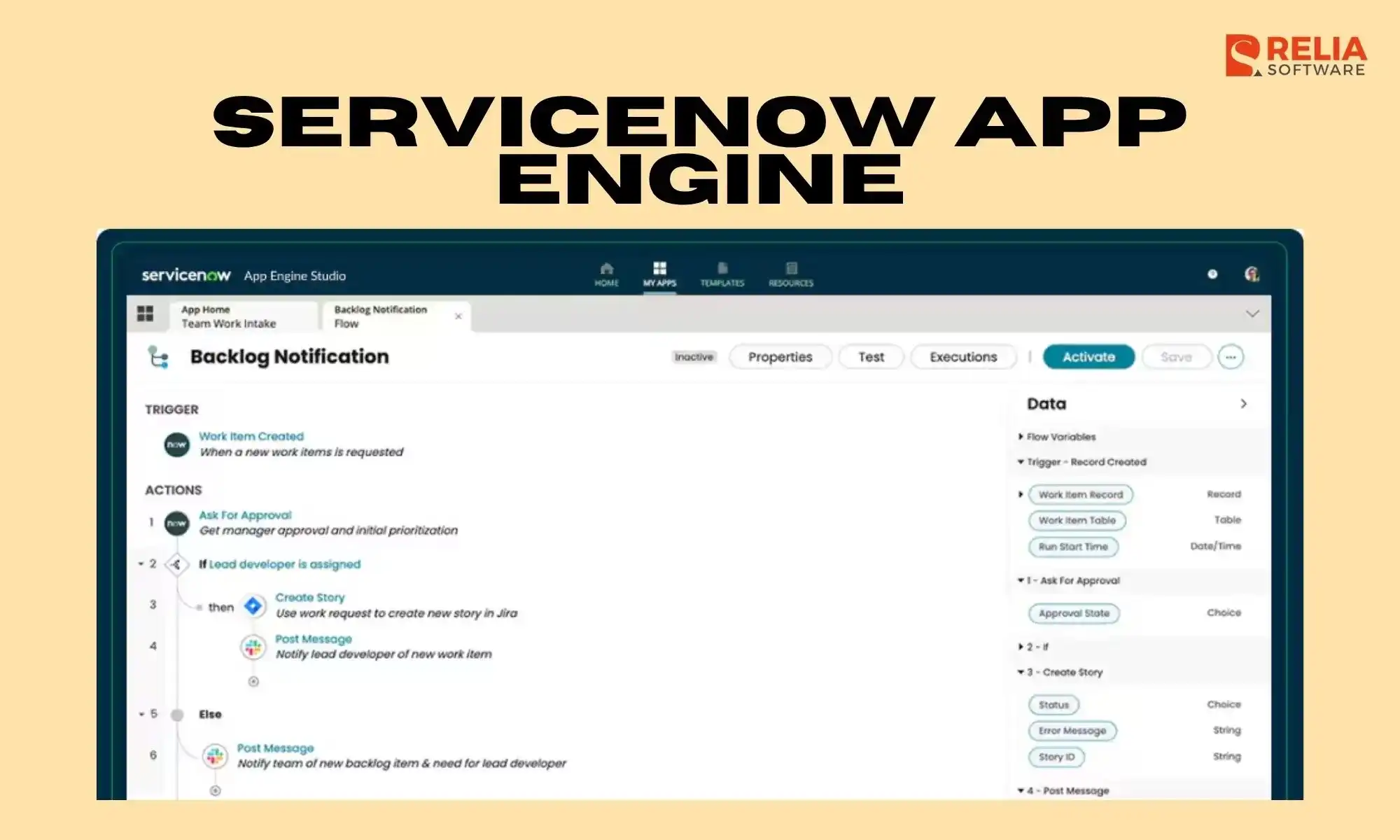
WaveMaker
WaveMaker is an open-source low-code platform designed for building scalable web and mobile applications. It allows for deeper customization than typical low-code tools, focusing on API-driven and cloud-native applications.
Unique Features:
- Cloud-native Architecture: Designed for cloud environments such as AWS and Azure, simplifying scaling and management.
- Two-Way API Generation: Supports both REST and SOAP APIs, making it easy to integrate app data and logic with external systems.
- Microservices Architecture: Allows developers to break down applications into modular, independent services development.
- Hybrid & Native App Support: Enables businesses to provide flexibility for different mobile app deployment strategies.
- IDEs Support: Allows developers to leverage familiar tools for advanced coding and debugging.
- DevOps Capabilities: Enables CI/CD pipelines for faster development cycles.
Personal Review: WaveMaker gives developers full control over both the front-end and back-end, making it great for building highly customized and scalable apps. However, since it's open-source, it requires more technical know-how than platforms like Power Apps or Zoho Creator. It’s a solid choice for experienced developers but might be too complex for simple projects.

Airtable
Airtable is a no-code tool that works like a spreadsheet but has the features of a database. It helps teams organize data, automate tasks, and work together easily. With its flexible views and easy customization, it’s perfect for teams that want a powerful, user-friendly platform without needing to know how to code.
Unique Features:
- Spreadsheet-like Interface: Looks and feels like a spreadsheet, so it’s easy for anyone to use—no coding needed.
- Multiple View Options: Let's you see your data in different ways, like calendars, Kanban boards, or galleries to fit your workflow.
- Real-time Collaboration: Team members can leave comments right on records, making it easier to stay in sync and manage projects.
- Dashboard Apps: Helps you see and understand your data through built-in charts and visuals—no need for extra tools.
- Custom Permissions: You can control who can see or edit different parts of your project, keeping everything organized and secure.
Personal Review: I used Airtable mainly for managing projects and working with my team. Its spreadsheet-style layout makes it super easy for anyone to use, even without technical skills. That said, it doesn’t handle complex logic or advanced workflows very well. I’d recommend it for small teams that need a simple, flexible way to manage data—but not for projects that require deep integrations or high-level customization.
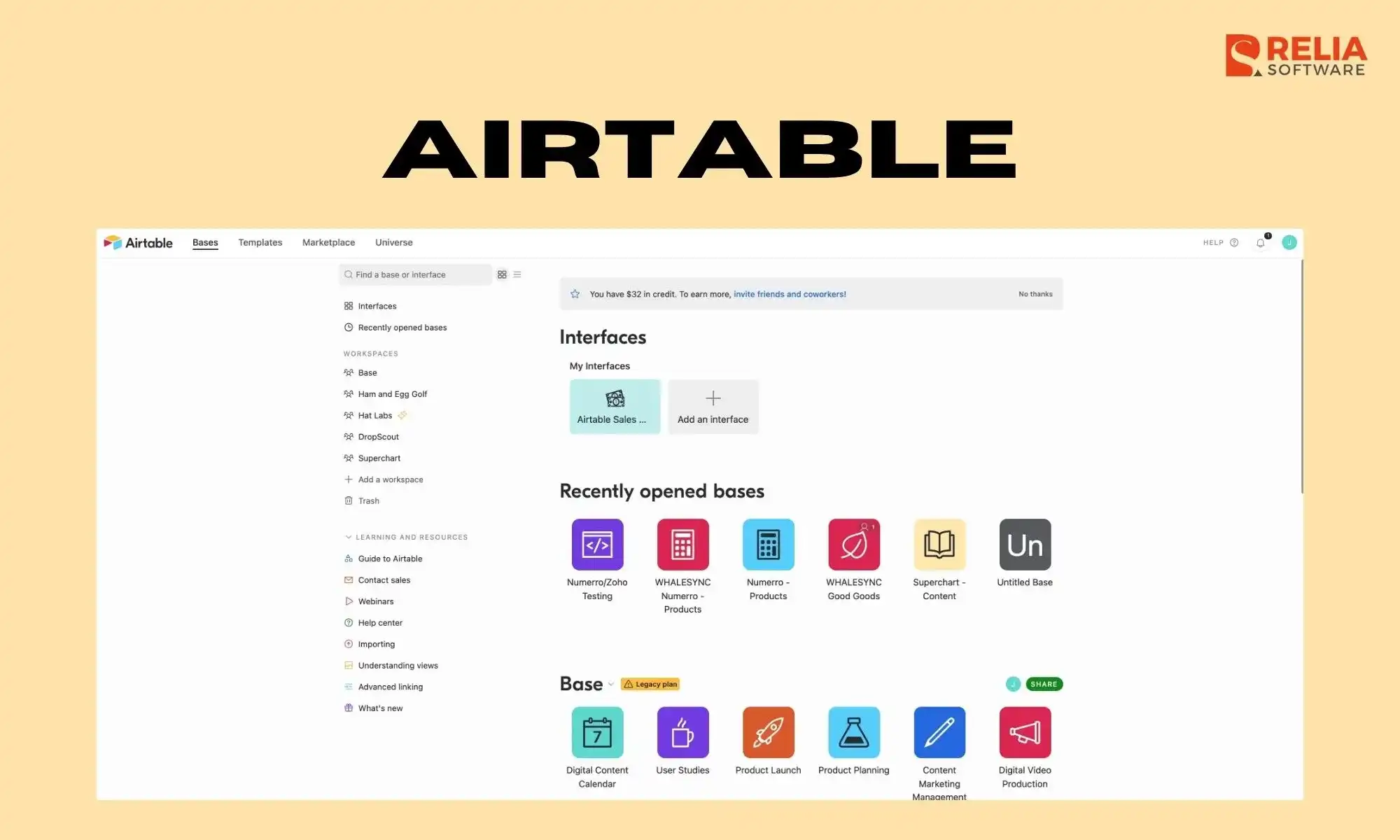
Key Criteria To Evaluate A Good Low-code & No-code Platform
When evaluating low-code and no-code platforms, consider these key criteria to ensure the platform meets your organization’s needs:
- Ease of Use: Go for platforms with a user-friendly interface, clear guides, and an active community. This makes it easier for non-developers to build apps.
- Integrations: Make sure it connects easily with your current tools, databases, and third-party apps through APIs.
- Flexibility: Look for options that let you add custom code or advanced features if needed—great for handling more complex tasks.
- Scalability: The platform should grow with your business, handling more users, data, and workflows without slowing down.
- Security & Compliance: Pick a platform that meets industry standards and regulations, especially if you’re handling sensitive data.
- Team Collaboration: It should support teamwork between developers and non-developers to keep projects moving smoothly.
- Mobile Support: Choose a tool that works well on both web and mobile, so your app runs smoothly on any device.
- Cost: Check if the pricing fits your budget and if there’s a free plan or trial to test things out.
- Automation: A good platform should help you easily automate tasks and processes, saving time and improving efficiency.
>> Read more:
- Top 9 Machine Learning Platforms for Developers
- Top 10 Best Cloud Computing Platforms For Businesses
Conclusion
Low-code and no-code platforms are changing companies' software development process. These tools let businesses to run more effectively, react faster to market changes, and accelerate corporate expansion. Being competitive in the digital age depends on these technology framework.
Working with trully skilled and experinced software development companies can have a big impact to your business. Their professional expertise guarantees the quality of your product, allowing you to spend more time to concentrate on strategy, development, and other essential parts of your project.
>>> Follow and Contact Relia Software for more information!
- development

